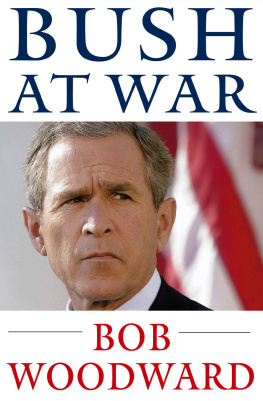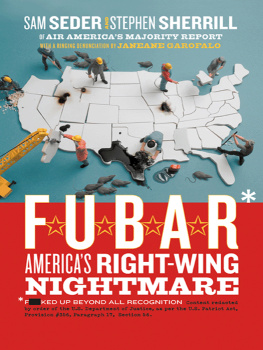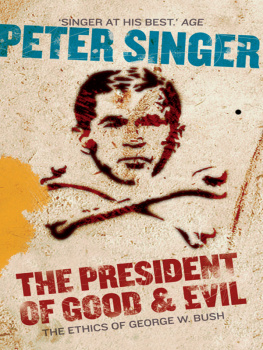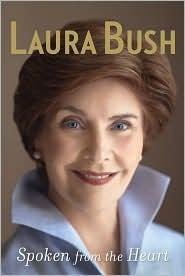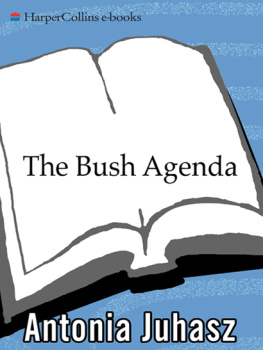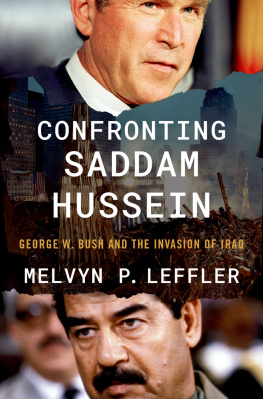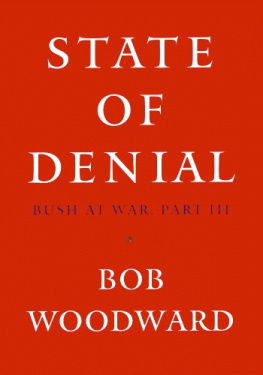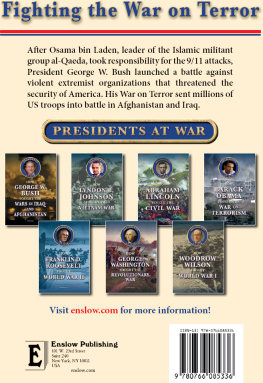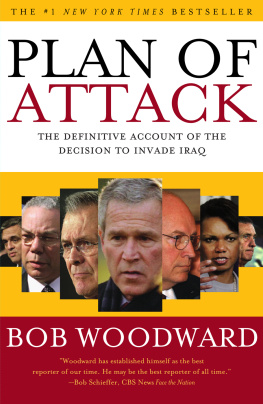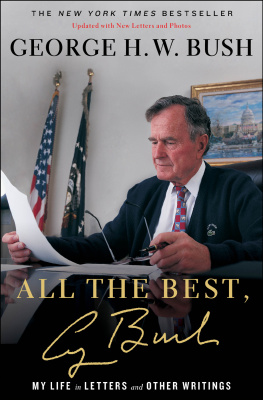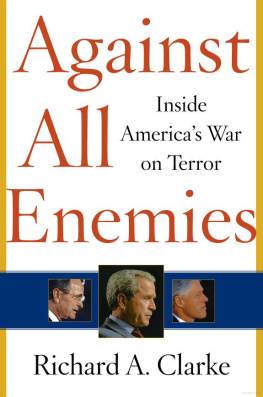
Also by Bob Woodward
Bush at War
Maestro: Greenspans Fed and the American Boom
Shadow: Five Presidents and the Legacy of Watergate
The Choice
The Agenda: Inside the Clinton White House
The Commanders
Veil: The Secret Wars of the CIA 19811987
Wired: The Short Life and Fast Times of John Belushi
The Brethren
(with Scott Armstrong)
The Final Days
(with Carl Bernstein)
All the Presidents Men
(with Carl Bernstein)


SIMON & SCHUSTER
Rockefeller Center
1230 Avenue of the Americas
New York, NY 10020
Copyright 2004 by Bob Woodward
All rights reserved, including the right of reproduction in whole or in part in any form.
SIMON& SCHUSTERand colophon are registered trademarks of Simon & Schuster, Inc.
Map by Laris Karklis
Library of Congress Cataloging-in-Publication Data is available.
ISBN 0-7432-6287-5
Visit us on the World Wide Web:
http://www.SimonSays.com
Authors Note
Mark Malseed, a 1997 architecture graduate of Lehigh University who was my assistant on Bush at War, stayed on for this book, the next volume in the Bush saga. I have been blessed to have him assist me full-time in the reporting, writing, research and conception of the book. Mark blossomed in every way, particularly as an editor who knows how to compress, clarify meaning and find the proper words and rhythm for a story. He is incredibly well-informed on everything from literature to geography and current events. He is a computer and Internet whiz, one of the younger generation whose technical skills are a sixth sense. Though he retains a natural tough-mindedness, his hallmarks are a deep sense of fairness and an insistence that we reflect with precision what people said, meant and did. Ours is a friendship that has grown and one I continue to treasure. Last time he was a collaborator. This time he was a partner.
To Elsa
A Note to Readers
The aim of this book is to provide the first detailed, behind-the-scenes account of how and why President George W. Bush, his war council and allies decided to launch a preemptive war in Iraq to topple Saddam Hussein.
Information in the book comes from more than 75 key people directly involved in the events, including war cabinet members, the White House staff and officials serving at various levels of the State and Defense Departments and the Central Intelligence Agency. These interviews were conducted on background, meaning I could use the information but not identify the sources of it in the book. The main sources were interviewed a number of times, often with long intervals between interviews so they could address new information I had obtained. In addition, I interviewed President Bush on the record for more than three and a half hours over two days, December 10 and 11, 2003. I also interviewed Secretary of Defense Donald Rumsfeld on the record for more than three hours in the fall of 2003.
Many of the direct quotations of dialogue, dates, times and other details of this history come from documents, including personal notes, calendars, chronologies, official and unofficial records, phone transcripts and memos.
Where thoughts, judgments or feelings are attributed to participants, I have obtained these from the person directly, a colleague with firsthand knowledge or the written record.
I spent more than a year researching and interviewing to obtain this material. The reporting started at the bottom of the information chain with many sources who are not mentioned in the book but were willing to share some of the secret history.
The decision making leading to the Iraq Warconcentrated in 16 months from November 2001 to March 2003is probably the best window into understanding who George W. Bush is, how he operates and what he cares about.
I have attempted, as best I can, to find out what really happened and to provide some interpretations and occasional analysis. I wanted to take a reader as close as possible to the decision making that led to war.
My purpose is to recount the strategies, meetings, phone calls, planning sessions, motivations, dilemmas, conflicts, doubts and raw emotions. The most elusive parts of any history are often the critical moments in the debates and the key turning or decision points that remain secret for years and are not revealed publicly until presidents and others leave office. This history presents many of those moments, but I am aware I have not found all of them.
Bob Woodward
March 1, 2004
Washington, D.C.

Prologue
P RESIDENT G EORGE W. B USH clamped his arm on his secretary of defense, Donald H. Rumsfeld, as a National Security Council meeting in the White House Situation Room was just finishing on Wednesday, November 21, 2001. It was the day before Thanksgiving, just 72 days after the 9/11 terrorist attacks and the beginning of the eleventh month of Bushs presidency.
I need to see you, the president said to Rumsfeld. The affectionate gesture sent a message that important presidential business needed to be discussed in the utmost privacy. Bush knew it was dramatic for him to call the secretary of defense aside. The two men went into one of the small cubbyhole offices adjacent to the Situation Room, closed the door and sat down.
I want you the president began, and as is often the case he restarted his sentence. What kind of a war plan do you have for Iraq? How do you feel about the war plan for Iraq?
Rumsfeld said he didnt think the Iraq war plan was current. It didnt represent the thinking of General Tommy Franks, the combatant commander for the region, and it certainly didnt represent his own thinking. The plan was basically Desert Storm II Plus, he explained, meaning it was a slightly enhanced version of the massive invasion force employed by Bushs father in the 1991 Gulf War. I am concerned about all of our war plans, the secretary added. He poured out some of his accumulated frustrations and consternation. He was reviewing all 68 of the departments secret war and other contingency plans worldwide and had been for months.
Bush and Rumsfeld are a contrasting pair. Large and physical with a deep stare from small brown eyes, Bush, 55, has a quick, joshing manner which at times borders on the impulsive. Focused, direct, practical but not naturally articulate, he had been elected to his first political office as governor of Texas only nine years earlier, a novice thrust into the presidency. Rumsfeld, 69, had been elected to his first political office, congressman from the 13th District of Illinois in the Chicago suburbs, 39 years earlier. Small, almost boyishly dashing, with thinning combed-back hair, Rumsfeld was intense and also focused as he squinted through his trifocals. He is capable of a large, infectious smile that can overwhelm his face or alternatively convey impatience, even condescension, though he is deferential and respectful to the president.
In his semi-professorial voice Rumsfeld explained to Bush that the process of drafting war plans was so complex that it took years. The present war plans tended to hold assumptions that were stale, he told the president, and they failed miserably to account for the fact that a new administration with different goals had taken over. The war planning process was woefully broken and maddening. He was working to fix it.
Next page

